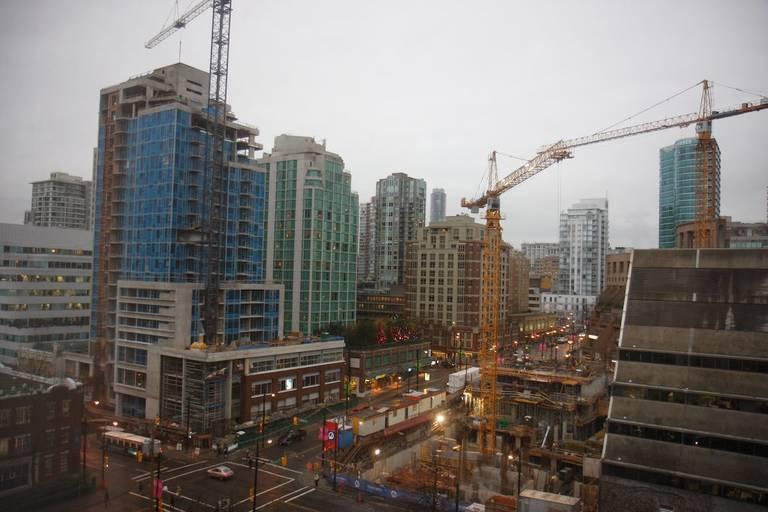
Last year Vancouver, Canada, became the first major city in North America to target zero carbon emissions by 2030. The goal includes plans to make all new buildings emission-free by 2030 -- meaning ultra-energy-efficient new buildings will soon be common in Vancouver.
In Vancouver, 56 percent of greenhouse gas emissions come from buildings. Space heating and hot water heating cause significant carbon emissions.
"This plan is more than just about reducing our carbon pollution in Vancouver," says Sadhu Johnston, Vancouver city manager. "This is about building better-quality homes for the people who live in Vancouver. It's ambitious, yet achievable, and will benefit everyone as we work toward our greenest city, renewable city, and healthy city goals."
Vancouver's carbon-reduction targets require new buildings to:
- Meet a zero-emissions building standard such as the Passive House standard
- Tap into a neighborhood energy utility to increase consumption of renewable energy
Passive House standard grows in popularity
Passive House is a rigorous international standard for energy efficiency that that reduces energy use for heating and cooling by 80 percent. This standard has grown in popularity recently. Vancouver is a hotbed, with 600 Passive House projects completed or on the books. One of the most notable projects, The Heights, is located in the East Hastings corridor of Vancouver Heights; it will soon be the largest Passive House certified project in Canada.Canada shattered records for the quantity of Passive House certified projects last year, according to the report Accelerating Market Transformation for High-Performance Building Enclosures by the Pembina Institute. Larger-scale projects such as The Heights are more common than ever before, encouraging innovation in larger-scale, ultra-energy-efficient construction.
“The number of Passive House units in North America has quadrupled in the last year, from 500 to over 2,000 units. And a quarter of these are in Vancouver alone,” says Dylan Heerema, an analyst for the Pembina Institute. “As industry capacity develops and more builders get on board, we can expect the added cost of building to near-zero emission standards to fall or even disappear. Factor in lower bills for energy and maintenance, and green buildings will increasingly become an affordable housing option.”
Energy-saving building retrofits
“Emission-reductions targets by cities will also help encourage energy-efficiency retrofits that save energy and increase comfort,” says John Rockwell, a technical sales engineer for Zehnder America. Zehnder manufactures the most efficient heat recovery ventilation units on the market and recently introduced the ComfoAir 70, a ventilation solution designed for retrofitting apartments and small homes.Super energy-efficient retrofits and new construction projects need mechanical ventilation systems to promote indoor air quality and provide fresh air. Many Passive House certified projects feature Zehnder heat recovery ventilators to supply a continuous stream of fresh, filtered air throughout the project; the ventilators transfer heat from the exhaust air to the intake air, saving energy. Zehnder heat recovery ventilators are certified Passive House components and are used in many projects, including the Heights.
As carbon-emission goals and stricter building codes promote ultra-energy-efficient buildings, high-performance solutions are paving the way to greater energy savings and comfort. These projects are reducing operating costs and cutting greenhouse gas emissions, for a cleaner environment.
Image credit: Flickr/Randal Schwartz

Sarah Lozanova is an environmental journalist and copywriter and has worked as a consultant to help large corporations become more sustainable. She is the author of Humane Home: Easy Steps for Sustainable & Green Living, and her renewable energy experience includes residential and commercial solar energy installations. She teaches green business classes to graduate students at Unity College and holds an MBA in sustainable management from the Presidio Graduate School.














